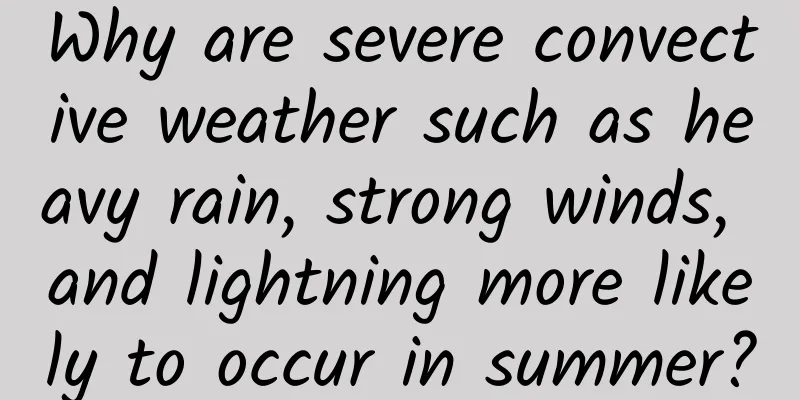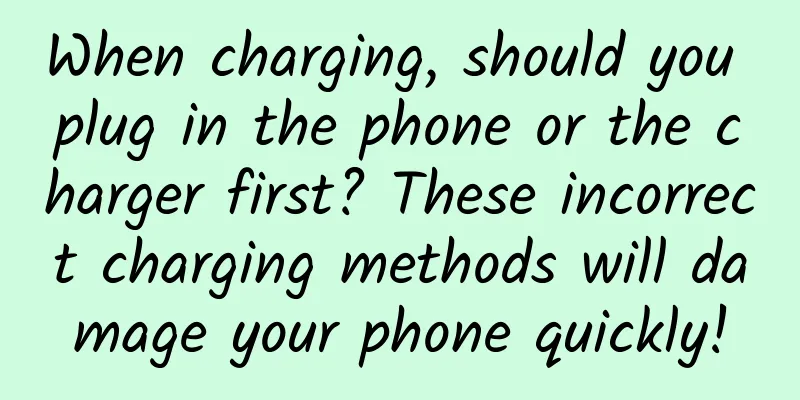Why are severe convective weather such as heavy rain, strong winds, and lightning more likely to occur in summer?

|
Dahe.com (Reporter Mo Shaohua) The weather is hot in the summer, and the temperature rises. Heavy rains are prone to occur when the weather is hot and humid. I believe that many Henan citizens have had a deeper experience recently. Heavy rains occur frequently, accompanied by strong winds, thunder and lightning, and hail. What is the reason? Thunderstorms, strong winds, heavy rainfall, and local hail. Yesterday's severe convective weather had significant characteristics The characteristics of Henan's weather phenomena were very obvious from the afternoon of July 25 to the morning of July 26. Thunderstorm gales of level 10 or above occurred in 41 counties (cities and districts) across the province, with maximum wind speeds reaching levels 12 to 13, accompanied by strong lightning activity. Moderate to heavy rain occurred in most parts of the province. Scattered heavy rain or torrential rain occurred in Nanyang, Zhumadian, Zhengzhou, Pingdingshan, Xuchang, Xinxiang, Jiaozuo, Luoyang, Kaifeng, Xinyang and other places. The precipitation at 267 stations exceeded 50 mm, including 9 stations with more than 100 mm. The maximum rainfall reached 166.3 mm. A total of 808 stations in 120 counties (cities and districts) experienced short-term heavy rainfall with hourly precipitation exceeding 20 mm, and 45 stations had one-hour precipitation exceeding 50 mm; the largest precipitation was at Huayuankou Station in Zhengzhou City, reaching 103.7 mm. From 15:00 to 18:00 on the 25th, hail occurred in Sanmenxia, Jiaozuo, Luoyang, Xinxiang and other places. Among them, the largest hail in Chengguan Town, Songshan County reached 4 to 6 cm in diameter. Why is severe convective weather more likely to occur in summer? Experts from the Henan Provincial Meteorological Bureau explained that the formation of this severe convective weather was mainly due to the influence of the zonal mesoscale convective system generated by the eastward movement of the westerly shortwave trough, which is a very obvious squall line weather process. Before the process occurred, Henan and its surrounding areas experienced significant temperature and humidity increases due to the southwesterly warm and humid airflow at the edge of the subtropical high and clear and cloudless weather, and abundant water vapor and unstable energy accumulated in the atmosphere. As the high-altitude trough carried cold air eastward, the vertical instability of the upper atmosphere intensified, strong convection developed in southern Shanxi, and a strong cold front formed near the ground; as the cold front moved eastward and southward, new convection was continuously triggered in western Henan, and developed into a squall line in central Henan, bringing strong convective weather such as thunderstorms, strong winds, short-term heavy rainfall, and hail to Henan. Too technical to understand? Let's first look at the "aircraft carrier" that caused this kind of weather According to experts, a squall line is a group of thunderstorms arranged in a line (band) shape. Looking down from the sky, it can be seen as an "aircraft carrier" of severe convective weather. Each convective cell thunderstorm is like a fighter jet on the "aircraft carrier". It is a catastrophic weather system with huge destructive power. Squall lines are characterized by their small size and short life span. Their width is about 20 to 50 kilometers, and their length is generally tens to hundreds of kilometers. Their duration ranges from a few hours to more than ten hours. Squall lines carry enormous energy and may cause a wide variety of severe convective weather, including thunderstorms, strong winds, short-term heavy rainfall, hail, and sometimes even tornadoes. These severe convective weather events may occur alone or in groups of several. Nanyang, Xinyang, Luoyang and Zhengzhou have sufficient electricity This severe convective weather process was accompanied by strong lightning activity. According to the monitoring system of Henan Province Lightning Monitoring System, from 12:00 on July 25 to 12:00 on July 26, a total of 62,401 cloud-to-ground lightning strikes were detected in the province, and the high-density lightning strikes were mainly distributed in Nanyang, Xinyang, Luoyang and Zhengzhou. Among them, 5,307 cloud-to-ground lightning strikes were observed in Zhengzhou. Lightning is more likely to occur in severe convective weather in summer. How to prevent it? According to experts, lightning is a natural phenomenon, which is mainly divided into intra-cloud lightning and cloud-to-ground lightning. Since the distribution of charges inside clouds has the characteristics of heterogeneous charge distribution, when the potential difference between heterogeneous charge areas reaches a certain level, it will break through the air to form discharge, resulting in intra-cloud lightning or inter-cloud lightning. When the amount of charge in a cloud is large enough, a large amount of opposite charges will be induced on the ground close to the cloud, especially on buildings, metal objects, or objects at the junction of land and water that protrude from the ground. When the potential difference between the cloud and the ground reaches a certain level, cloud-to-ground discharge will occur, resulting in cloud-to-ground lightning. For example, the lightning that struck the Zhengzhou Zhongyuan Fu Tower, which was photographed by many Zhengzhou citizens on the evening of the 25th, was a typical cloud-to-ground lightning, but it generally does not cause damage to buildings with complete lightning protection devices. The meteorological department recommends that high-rise buildings should install lightning protection devices in accordance with national standards. Relevant owners and high-rise building managers should organize the unit's lightning defense work in accordance with national laws and regulations, select testing agencies with corresponding qualification levels to conduct regular lightning protection device inspections, and carry out daily inspections and maintenance to ensure that lightning protection devices can function normally. No, the rain is coming again today. According to the weather forecast of Zhengzhou Meteorological Bureau, Zhengzhou will have moderate to heavy rain from this afternoon to night, accompanied by short-term heavy precipitation, thunderstorm and strong wind. Affected by the eastward movement of the mid-latitude low trough, Zhengzhou will have moderate to heavy rain from this afternoon to night, with local heavy rain and uneven rainfall distribution. Thunderstorms will be accompanied by strong convective weather such as short-term heavy precipitation, thunderstorm and strong wind. The cumulative precipitation is 10-40 mm, 50-70 mm in some places, and the maximum hourly rainfall intensity is 30-50 mm. The main rainfall period is from 16:00 on the 27th to 05:00 on the 28th. Popular Science Knowledge: How to prevent lightning indoors? 1. When encountering thunderstorms, close doors and windows, turn off electrical appliances at home, and unplug power, closed-circuit, and network devices. It is best not to make phone calls. 2. Do not approach exposed metal objects indoors, such as water pipes, heating pipes, gas pipes, etc., do not approach damp walls, and stay away from independently erected lightning rods (towers) and their grounding down conductors. 3. If there is a solar water heater installed on the roof of your home, it is not recommended to use the solar water heater for bathing during thunderstorms. How to prevent lightning outdoors? 1. Stay away from isolated and metal objects such as trees, towers, flagpoles, and metal billboards. 2. When swimming, get out of the water as quickly as possible to avoid being struck by lightning in the water. 3. Cars are ideal places to avoid lightning, so be sure to keep the windows closed. 4. When outdoors, try to hide in safe places such as indoors or in caves. Do not take shelter under trees or in shacks without lightning protection devices. 5. When there is no suitable lightning protection site, you should squat and lower your head, keep your feet together, hug your knees with your hands, and do not support the ground with your hands to reduce the risk of encountering step voltage. |
>>: The fierce beast that makes you adorable must be me!
Recommend
How should brands plan their presence on Xiaohongshu during the 618 shopping festival?
May is almost halfway through, and brands are sti...
Kang Zhijun's "The Human Side of Enterprise" Intensive Study Class
Kang Zhijun's "The Human Side of Enterpr...
91 Ten Articles: Daily Must-Read Briefing for the New Energy Vehicle Industry 210315
1. According to people familiar with the matter, ...
The most searched! This "pet" that is popular among children is very dangerous →
Review expert: Peng Guoqiu, deputy chief physicia...
Does donating blood harm your health? Huaxi doctors: You must know these common sense!
Hello everyone I am a drop of lovely (no objectio...
Has anyone seen a hummingbird in the country? No, it may not even be a bird
“There are hummingbirds in the wild in China” Man...
Hongqi Automobile's latest model is equipped with DJI's flagship vehicle-mounted driving platform solution, achieving high-end intelligent driving without map in the city
On the eve of the 2024 Beijing Auto Show, China F...
Comparison of the Fluency of iOS7.1 on Various iPhone Generations
After the release of iOS7, many old iPhone users s...
Add animation to the tab bar
Source code introduction: RAMAnimatedTabBarContro...
Marketing Promotion: How can video H5 attract users’ attention?
Users like to follow TV dramas and watch variety ...
How tall a coconut tree can grow was determined 4 million years ago
Coconut is an important tropical oil and fruit cr...
How to tell whether keywords are optimized well in website optimization?
For SEO website optimization workers, if we want ...
Google just released a tool to crack into your iPhone
Google released a powerful tool this morning to h...
A law takes Google News out of Spain
On December 11, the Spanish legislature recently ...
Amazon: AMD CPU shipments account for 84.18% in February 2025, far ahead of Intel
According to the latest data, AMD accounted for 8...









